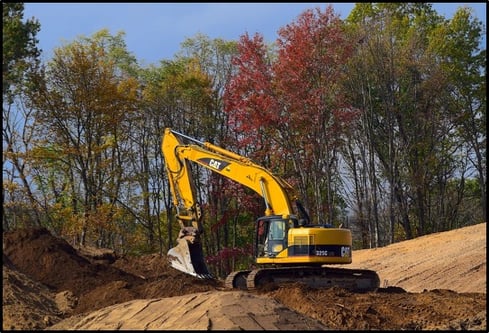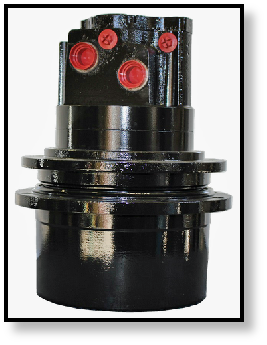
If your machine keeps steering to one side or has issues trying to climb an incline, one of the final drives may be trapped in high-speed mode. Even though it makes your final drive seem weak, it isn’t really a problem with your final drive. In this Shop Talk Blog post, we are going to talk about why high-speed mode can be a problem and what you can do to resolve it.
Why High Speed Mode Mimics a Weak Final Drive

If your final drive seems weak, check to see if it is a two-speed model. If so, there is a chance that it is trapped in high-speed mode. In high-speed mode, even a perfectly healthy final drive may have problems trying to generate enough torque to move a significant load or drive up a steep incline. This is a problem with the speed control system, NOT with the final drive motor!
Remember that speed and torque are inversely related: an increase in speed (high speed mode) will reduce available torque. If your machine is in high speed due to an issue with speed control, it simply cannot generate the same torque that is available in low-speed mode. The result is a final drive that seems to be weak.
Checking for the Problem
The easiest way to determine if your final drive motor is stuck in high-speed mode is to temporarily disconnect the two-speed line to see if the performance is altered. If performance doesn't change, there are some other things you can check before sending in your final drive for evaluation and repair.
Fixing the Problem
After you've identified the problem, the solution will vary based on what type of machine you have. For example, if your machine has electronic controls for travel and speed, the problem may be an electrical issue such as a relay, solenoid, or controller. You may need to track down some wiring diagrams and additional equipment to pinpoint why the speed mode isn’t working correctly. If you’re lucky, the problem might just be a loose wire or a loose connection. Depending on your skill level in electronic troubleshooting and repair, this might be a job better left to a professional.

If your machine uses mechanical controls, then the speed control would be adjusted by control linkages and pilot pressure. Control linkages would be the easiest thing to check first. It’s not uncommon for something to get trapped in the linkages and cause problems. Pilot pressure should be similarly simple to check.
Conclusion
Just because final drive seems to lack power doesn’t mean the source of the problem lies within the final drive. Final drives will behave as if they are weak when they become trapped in high speed mode. High speed mode won’t allow them to generate the same torque as they can at slower speeds. If your final drive motor seems to be weak, be sure to eliminate high speed mode as a potential cause before you assume it is a final drive issue.
Texas Final Drive is your partner in providing new or remanufactured final drive hydraulic motors from a single mini-excavator to a fleet of heavy equipment. Call today so we can find the right final drive or hydraulic component for you, or check out our online store to find your O.E.M. manufacturer brand motor now.

